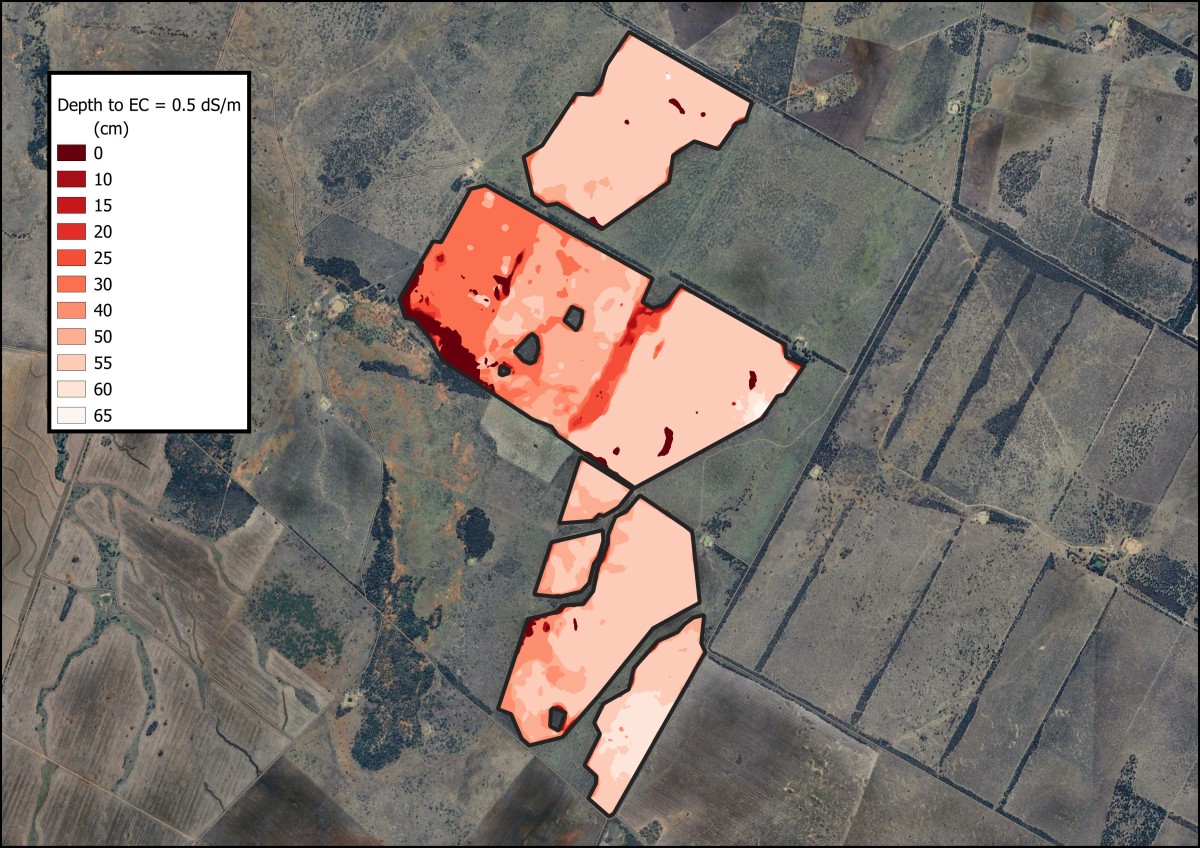Navigating the Complexities of Gilgai Terrain in the Western Downs Region and the Maranoa
Background
The Challenge: Farmers in Glenmorgan faced a daunting task. Their fields were riddled with deep gilgai formations, known locally as “melon holes”, making spraying, planting, and harvesting highly inefficient. These formations impeded machinery movement and caused waterlogging issues. The proposed solution involved undertaking extensive earthworks to remove these formations. However, this raised concerns about exposing underlying dispersive soil layers, potentially creating more problems than solutions.
Objective
The Goal: OptiSoil was brought in to conduct a comprehensive soil assessment. The objective was to provide a clear understanding of the soil composition, including the risks associated with land levelling, and to guide the farmers in making informed decisions about their land management practices.
Methodology
The Approach: A thorough site evaluation was conducted, including a drive around the fields with the growers. This allowed for a firsthand understanding of the areas of concern, the variation in crop growth, and the identification of soil sampling locations. A detailed sampling strategy was employed, focusing on both the melon holes and surrounding areas to ascertain the chemical differences within the soil.
Findings
Laboratory Results: The analysis revealed widespread subsoil dispersion, necessitating the use of gypsum or other ameliorants in the event of landforming. This was anticipated, and the budget had already accounted for gypsum application. However, an unexpected discovery was made - the soil exhibited extremely high chloride content. Chloride toxicity was prevalent at depths shallower than 40cm across the majority of the area. Consequently, landforming deeper than 40cm risked exposing these toxic chloride levels, with limited options for mitigation. Interestingly, the soil at the bottom of the gilgai formations displayed significantly more favourable chemistry due to prolonged leaching, in contrast to the hostile chemical makeup found in the shallower areas outside the gilgai.
Conclusion
Strategic Decision Making: The findings underscored a critical reality - landforming in areas with high chloride risk was not advisable. This case study highlights the importance of comprehensive soil analysis in agricultural planning. By identifying key soil characteristics and potential risks, OptiSoil helped the growers in Glenmorgan avoid a costly and potentially detrimental mistake. The insights gained from this assessment emphasised the value of informed decision-making in soil management and land use practices.


